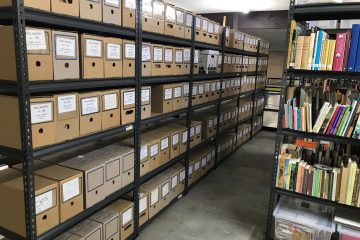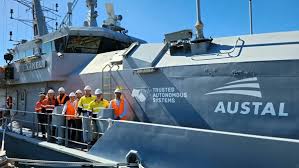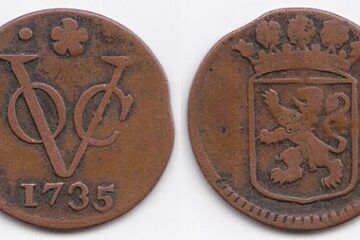NESWA is an association of men and women in Australia who, at an earlier stage in life, served their country in the Dutch Armed Forces, be it Army, Navy or Air Force, korps Mariniers’ (Marines), or the KNIL (Royal Dutch East Indies Army). Also ex-personnel of the Merchant Navy, members of the Dutch Resistance movement, Prisoners of War and victims of the German and Japanese occupation who were interned in labour and or concentration camps. The association opted for this broad definition to enable reaching as many Dutch people or people of Dutch origin with the same or similar interests and concerns.
NESWA represents and advises its members regarding financial matters such as pensions, one-off payments and compensations that may or may not be claimed. Similarly, advice is given regarding medals of honour and other decorations.
NESWA is represented in several umbrella organisations, Dutch as well as Australian. In addition NESWA is a member of the World Veterans Federation, Veteranen Platform Nederland and the Australian Veterans and Defence Council.
Below: NESWA Committee Members 1978 – 1979
An important link between the organisation and its members is our monthly magazine Wapenbroeders' (Comrades-in-arms’); it has proven to be a valuable source of information with news from the appropriate Government departments, NESWA branches in Australia, other Veterans’ organisations here and overseas etc.
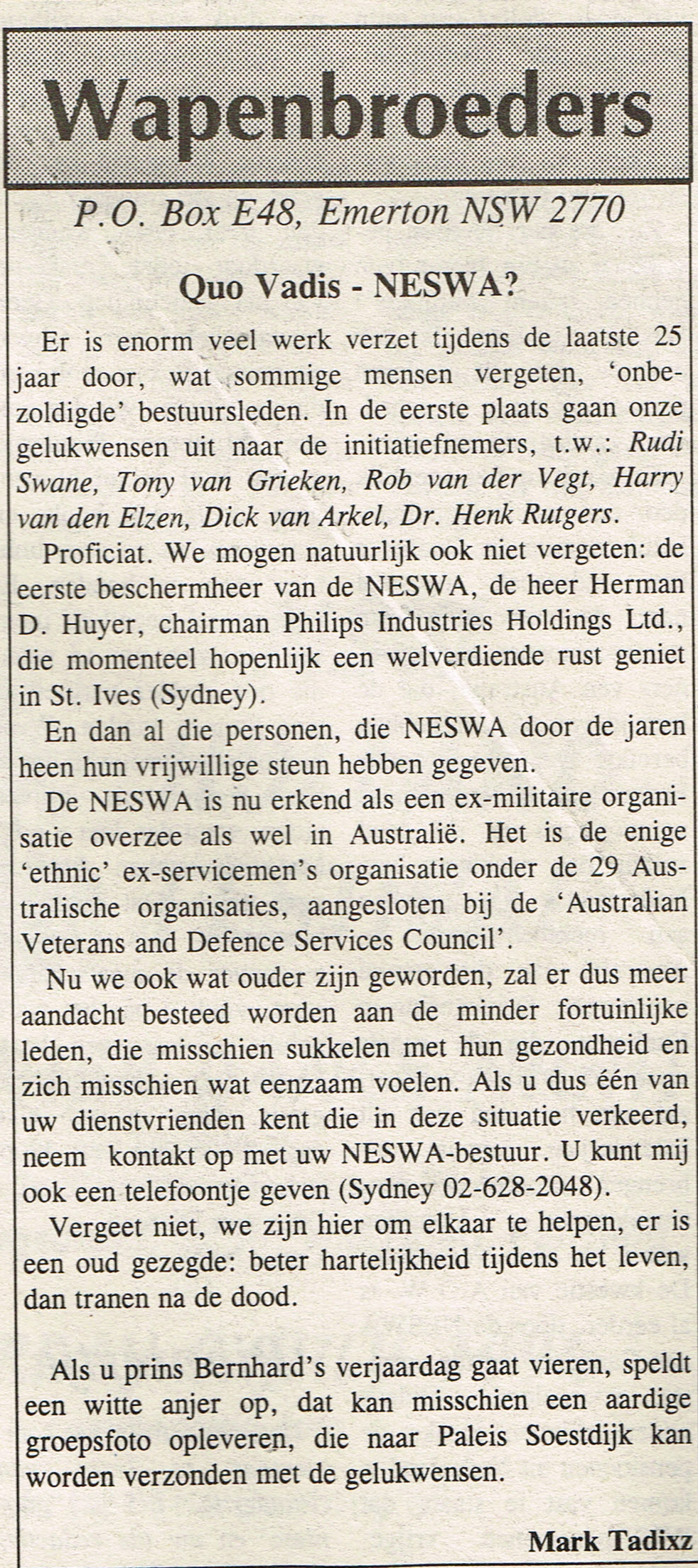
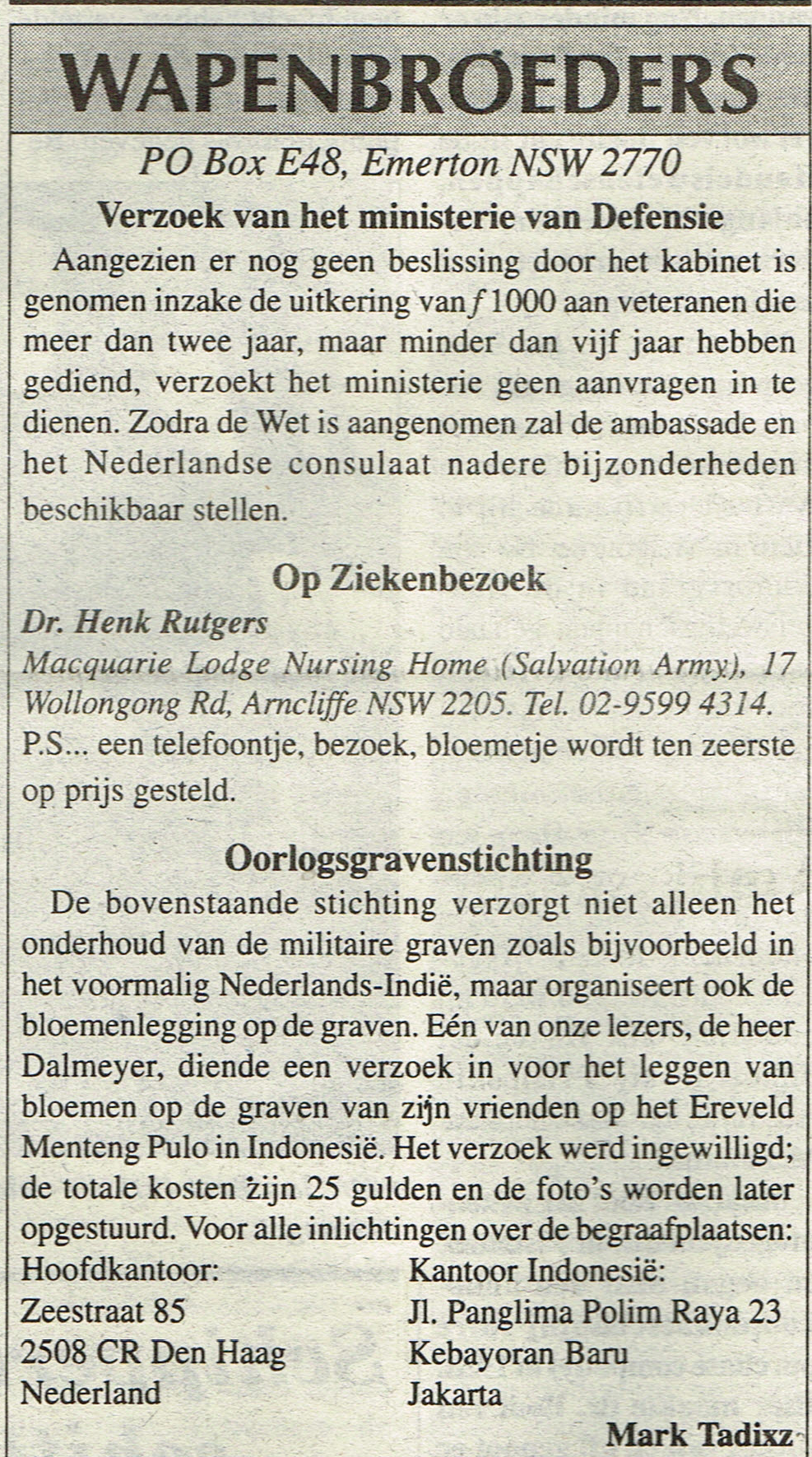
The Queensland Branch, Inc. NESWA- Qld was founded in 1973 – incorporated in 1991. Their relatively large membership covered the whole of the state of Queensland. Therefore, only members in the Southeast corner of the state could regularly visit meetings, commemoration services and social events organised in Brisbane. Several times per year, they organised coffee mornings at the Sunshine Coast and the North Coast to reach people in a slightly larger area.
Some of their magazines can be found here.
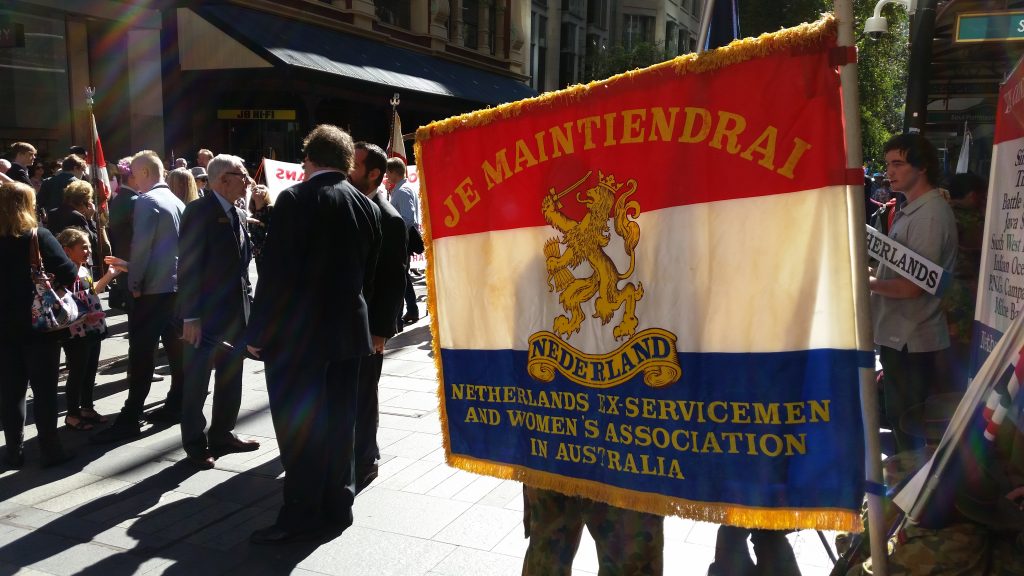
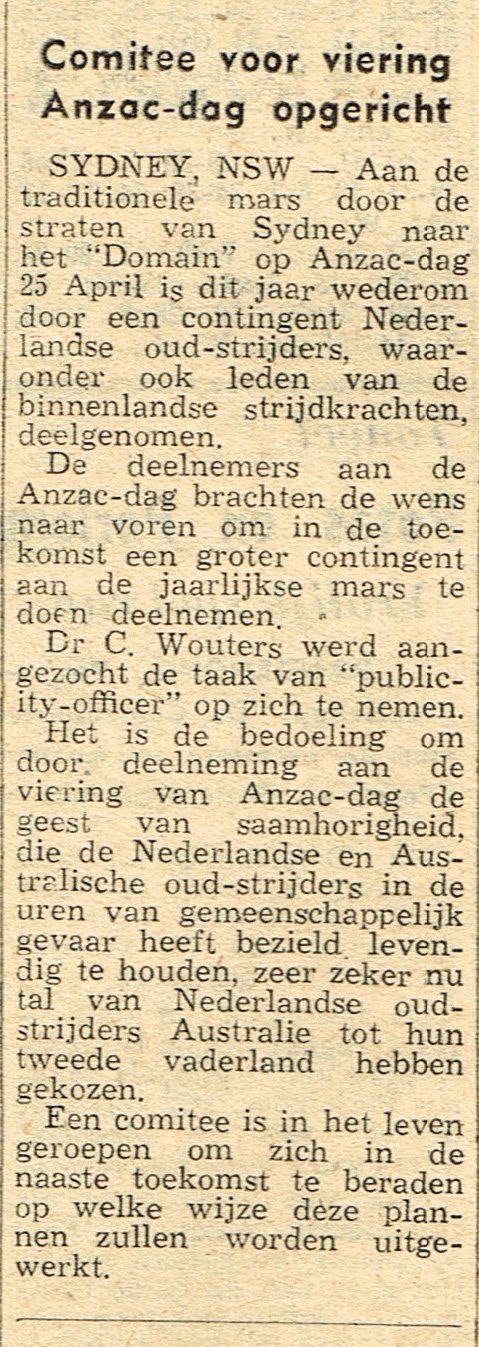
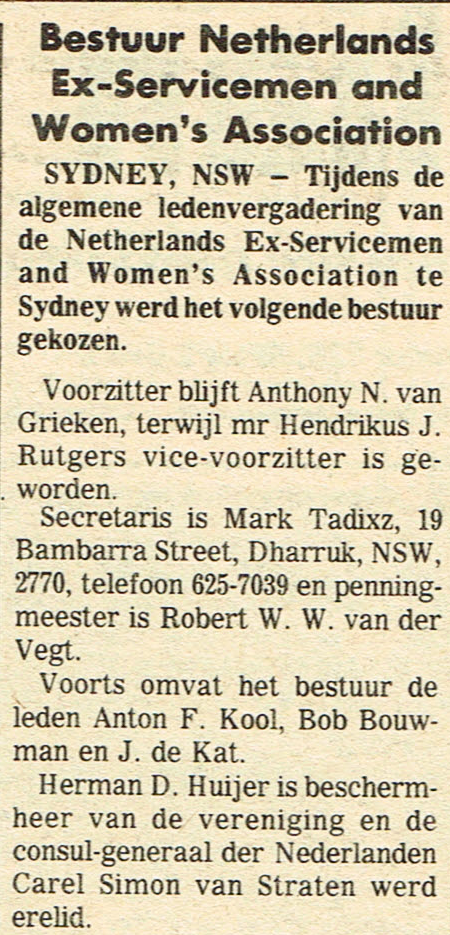
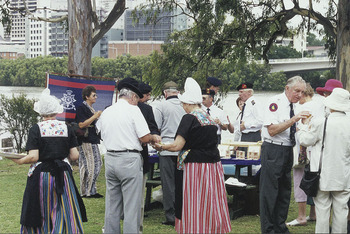
On December 11, 1999, the anniversary of the Korps Mariniers’ (Marines)and the 50th anniversary of the Australia section of the Contact Former Marines (COM) was celebrated in Australia. Picture taken in the garden of the Maritime Museum in Brisbane, ladies in Old Dutch costumes hand out snacks. Source Mariniers Museum Netherlands
The following text is from a booklet published by the Federation of Netherlands Societies Ltd. in February 1985. The research for this booklet was done by Mijntje Hage.
Documents from the archives of Pieter Boele van Hensbroek
Abstract from th e correspondences file below
This 31 July 2001 dossier from Jan Giezen (NESWA Queensland) to the Chair of the SDV sets out a comprehensive, evidence-led account of how Dutch WWII veterans living abroad—especially in Australia—face structural disadvantage compared with those in the Netherlands. After explaining NESWA’s inclusive mission and the practical realities of serving a widely dispersed, aging community, Giezen details specific inequities: restrictive eligibility rules (e.g., residency requirements), a 1952 policy ending awards for wartime deeds up to 1949, language and administrative barriers, and delays that are acutely harmful for elderly claimants.
The submission anchors its case in concrete examples: a KNIL veteran’s humiliating reception on return; a resistance worker’s protracted WUV approval; a camp survivor’s near-decade struggle capped by a final payout arriving on the eve of her husband’s death; repeated issues with widow documentation in Dutch; and the undervaluation of decorated airmen such as Gus Winckel. It also critiques muted Dutch advocacy in international controversies (e.g., “Lost Battalion” recognition, Laurens van der Post narratives) and highlights the role a veterans’ website has played in reconnecting people, surfacing records, and bridging geographic divides.
Concluding, Giezen offers pragmatic remedies: guarantee information access (CheckPoint) for overseas association chairs; institute SDV parallel-tracking of overseas claims with time-boxed follow-ups; and address the stewardship of memorabilia. The message is urgent but constructive: with WWII veteran numbers rapidly diminishing, dignified, equitable treatment for those abroad requires targeted administrative fixes and sustained attention from Dutch veteran institutions.
Inventory of the correspondence file
Document metadata
- Date: Tuesday, 31 July 2001
- From: Jan (J.) Giezen, NESWA Queensland (with W. Wortelboer referenced as collaborator)
- To: Lt-Col L. Habraken, Chair, Stichting Dienstverlening Veteranen (SDV), Doorn
- Nature: Cover letter plus a compiled dossier of issues, cases, correspondence, lists, and proposals regarding Dutch WWII veterans living abroad (esp. Australia)
Purpose and thesis
- Core concern: systemic misunderstanding in the Netherlands of overseas veterans’ realities; unequal (rechtsongelijke) treatment of veterans abroad vs. those living in the Netherlands
- Aim: brief SDV with detailed evidence, request remedial action, and propose practical fixes
NESWA mission and scope (p.3–6)
- Mission (paraphrased): fellowship, financial interests (pensions/entitlements), and support for ex-servicemen and women
- Who NESWA considers “veterans”: broader inclusion than in NL, including underground, camp victims, associated members, widows; goal is to keep shrinking groups together as long as possible
- Practicalities in Queensland: large distances; morning coffee/lunch meetings in RSL clubs (Cooroy and Gold Coast); heavy reliance on volunteers/partners; finances tight; monthly 24-page A4 magazine (“Oud-strijders”) as the main glue
Thematic sections listed in the letter
A. Who are veterans? (p.3)
B. What NESWA means for members (p.5)
C. Dutch veterans abroad (p.7)
D. Where veterans are short-changed (p.9)
E. Experiences with administration and Veteranen Platform (p.26)
F. A website (p.31)
G. Proposals (p.38)
H. Memorabilia (p.39)
Dutch veterans abroad: issues and examples (p.7–25)
- Post-war emigration drivers: stigma/criticism after return from NEI; jobs anxiety; societal mood
- Inequities called out:
- Exclusionary rules (e.g., “must have lived ≥1 year in NL” to qualify for recognition/allowances)
- Administrative opacity/delays; forms only in Dutch; little allowance for distance/age
- Medal/recognition cut-off (cabinet decision Nov 1952: no gallantry awards for deeds up to/including 1949)
- Named/illustrative cases:
- Albert B. (p.10): KNIL veteran’s poor reception/taxing of clothing allowance; decides to emigrate; later corrects Dam Monument urn omission
- Bert X. (p.13–14): resistance veteran; WUV struggle; distressing interview practice; ultimately approved after on-site medical
- Rosa de Jonge–van Oest (p.19–20): camp survivor; years of WUV effort; inequality vs. someone who arranged support earlier in NL; payment finally approved; administrative burden worsened by a home-value proof dispute; husband dies a day after funds land
- Ailsa Jagtman (widow) (p.22): recurring form/language issues; reliant on ad-hoc local help
- “Lost Battalion” & USS Houston survivors (p.18–19): US veterans’ recognition vs. Dutch 1952 decision; letter trail incl. Johan van Leer and VP reply
- Laurens van der Post controversy (p.24–25): critique of Dutch press portrayal; David Kriek’s counter-narrative; perceived lack of Dutch veteran advocacy
- Gus Winckel (p.21): celebrated NEI/RAAF B-25 pilot; undervalued on return to NL; emigrates to NZ
- Lists included:
- Surviving WWII Air Force veterans in the Netherlands (end 2000) (p.12)
- Surviving WWII Dutch Air Force veterans in Australia (end 2000), with Gold Coast asterisks (p.13)
Administration & platform interactions (p.26–31)
- CheckPoint magazine valued but access inconsistent; veteran ID/pass delays (e.g., H.A. La Fleur letter, p.27)
- VP letter (4 Jan 1996) about Dr Jonathan (Jack) Ford’s study “Allies in a Bind” judged “bears no reference…” (p.28) – contrasted with positive press later (Blauwe Wimpel, Dec 1997, p.29–30)
Website section (p.31–37)
- NESWA website since early 1990s: reconnecting “sobats”, facilitating searches, providing info/links, hosting Roermond Monument info; global traffic and testimonials (RAF Germany “you didn’t give up in 1940…”, p.34; users learning about parents’ service, p.35; veteran Gustaaf de Nijs’ letter, p.36; UK family query, p.37)
- Recommendations for a veterans (not organisational) site: simpler UX, larger fonts, English version, name lists by service, submission forms, prompt moderation, active maintenance
Proposals (p.38; earlier hints throughout)
- Ensure chairs of overseas veteran associations without a veteran card still receive CheckPoint (threshold-based, renewed annually after AGM)
- SDV to parallel-track overseas claims (lightweight case logging and timed follow-ups to reduce “paper lost / form missing” delays)
- Memorabilia handling (p.39 – flagged for action)
Tone and positioning
- Not written “on behalf of” the whole association, but the board is kept informed
- Emphasises no personal interest; aims at equity and timely, humane administration for aging veterans abroad
- Invites SDV’s view; offers email as a fast follow-up channel
